Blue Yurt Farms
Homesteading, Yurts, Travel, Life!
Learning about conservation of our precious forests, engaging in tree planting activities and leading a ‘greener’ way of life is what we’re about here at Blue Yurt Farms. Join us to learn more about living a simpler life that celebrates the important things in life.
About Me
Hello, and welcome to my personal ‘homestead’ blog. My name is Erin Baker and I am extremally excited to share my experiences with other people that are interested in healthy eating, farm life, and responsible travel. I don’t claim to be an expert on any of these subjects but I do promise that you’ll get some valuable info and some great stories from me.
And I don’t break promises!


Responsible Travel & Homesteading
Unfortunately for our planet, responsible travel is not the most popular way of getting around the globe these days. That said; things are shifting and more people are becoming aware of the dangers that we face if BIG action isn’t taken by each and every one of us. Even though I like to travel, I’m committed to doing it as ‘responsibly’ as possible and my aim is to inspire others to do the same.
My blog is my ‘homestead’ to do just that!
Latest Posts

How To Keep Perishables Fresh When Off-Grid
Living off the grid presents unique challenges when it comes to food preservation, particularly when refrigeration is not readily available. Since traditional electricity-powered refrigerators and freezers are often impractical in off-grid settings, alternative solutions are essential to maintain freshness and reduce food waste. 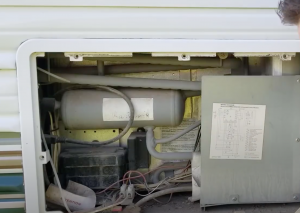 One primary approach to off-grid refrigeration is utilizing solar-powered or wind-powered energy systems to run small, energy-efficient fridges or freezers. Solar refrigerators, for instance, can operate using solar panels and a battery storage system, offering a renewable, eco-friendly way to keep perishables cool without relying on a grid connection. These units are typically smaller than conventional models but are designed for energy efficiency, using less power while still offering some semblance of the cooling power needed to preserve meat, dairy, fruits, and vegetables.
One primary approach to off-grid refrigeration is utilizing solar-powered or wind-powered energy systems to run small, energy-efficient fridges or freezers. Solar refrigerators, for instance, can operate using solar panels and a battery storage system, offering a renewable, eco-friendly way to keep perishables cool without relying on a grid connection. These units are typically smaller than conventional models but are designed for energy efficiency, using less power while still offering some semblance of the cooling power needed to preserve meat, dairy, fruits, and vegetables.
Powered Solutions Vs Insulated Cooler Boxes
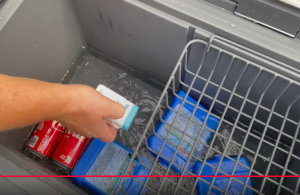 However, solar and wind-powered refrigerators may not always be enough or cost-effective for every off-grid setup. In these cases, high-end coolers and ice packs play a vital role in food preservation. Premium coolers, such as those made by Yeti, Pelican, or Engel, are designed to be extremely durable and well-insulated, capable of retaining ice and maintaining cold temperatures for extended periods. These coolers can keep food fresh for several days, which is particularly useful during warmer months or in more remote locations where access to fresh ice might be limited.
However, solar and wind-powered refrigerators may not always be enough or cost-effective for every off-grid setup. In these cases, high-end coolers and ice packs play a vital role in food preservation. Premium coolers, such as those made by Yeti, Pelican, or Engel, are designed to be extremely durable and well-insulated, capable of retaining ice and maintaining cold temperatures for extended periods. These coolers can keep food fresh for several days, which is particularly useful during warmer months or in more remote locations where access to fresh ice might be limited.
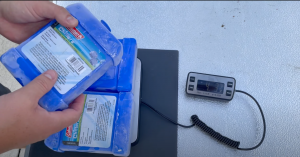 For even more effective cooling, many off-grid dwellers use dry ice or gel ice packs inside the coolers. Dry ice, in particular, can maintain sub-zero temperatures and last for a longer time than regular ice, although it requires careful handling due to its potential to cause frostbite or asphyxiation if used in poorly ventilated areas. When using one of the best ice packs for coolers, on the other hand, are reusable and provide a less intense but longer-lasting cooling effect, making them ideal for short-term trips.
For even more effective cooling, many off-grid dwellers use dry ice or gel ice packs inside the coolers. Dry ice, in particular, can maintain sub-zero temperatures and last for a longer time than regular ice, although it requires careful handling due to its potential to cause frostbite or asphyxiation if used in poorly ventilated areas. When using one of the best ice packs for coolers, on the other hand, are reusable and provide a less intense but longer-lasting cooling effect, making them ideal for short-term trips.
Transporting Perishables
When it comes to transporting food for longer distances, such as traveling into town to stock up, the challenge is to keep perishable items fresh for the duration of the trip. If you live far from grocery stores or towns, you may need to use a combination of insulated bags, coolers, and ice packs to ensure food stays cold and safe to consume. A well-packed cooler with plenty of ice or frozen gel packs can keep meats, dairy products, and fresh produce cold for several hours or even a full day, depending on the cooler’s insulation and the outside temperature. To maximize cooling efficiency during transport, packing the cooler as full as possible is key—less air space inside the cooler means less thermal exchange, helping to preserve the cold temperature longer.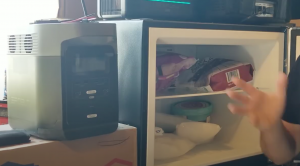
For those who frequently need to travel into town to stock up, a larger, more durable cooler is often worth the investment. Heavy-duty coolers with robust latches and reinforced handles are ideal for long-haul trips. Some off-gridders even use coolers that are designed to fit into vehicle trunks or trailers, ensuring that the food remains cold throughout the journey. Additionally, it’s helpful to pre-plan food stock-ups by purchasing large quantities of perishable goods in one trip to reduce the need for frequent travel, thus conserving energy and resources.
What About Non-Perishables?
Lastly, off-grid living often encourages the use of more non-perishable foods, such as canned goods, dehydrated meals, grains, and legumes, which do not require refrigeration and can be stored for extended periods. These items can supplement fresh produce and animal products, reducing reliance on refrigeration and increasing food security during long stretches without resupply. By combining refrigeration methods, coolers, careful food planning, and efficient transportation practices, off-grid dwellers can keep their food fresh and reduce waste while maintaining a self-sufficient lifestyle

Maintaining & Renovating Homestead Farmhouses
Renovating a farmhouse offers significant value, especially when it comes to preserving the integrity of its historic features. One of the key challenges with older homes is the difficulty in sourcing replacement parts for original materials and fixtures. Many historic homes were built with unique craftsmanship and custom components that are no longer available in modern markets. This makes repairs and restoration not only more practical but often more valuable than attempting to replace or update features with newer, mass-produced alternatives.
Repair Vs Replace
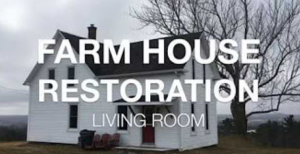 By repairing rather than replacing elements like windows, doors, and architectural details, homeowners can maintain the home’s original character and craftsmanship, which often carries a higher historical and financial value. Additionally, restoring existing features, such as the woodwork, trim, or stone foundations, can be more cost-effective than searching for exact replacements, particularly when considering the quality and durability of materials from earlier periods. In the long run, preserving the original elements of a farmhouse not only enhances its charm but also ensures its authenticity, making it more attractive to potential buyers or future generations who value the craftsmanship and history embedded in the home.
By repairing rather than replacing elements like windows, doors, and architectural details, homeowners can maintain the home’s original character and craftsmanship, which often carries a higher historical and financial value. Additionally, restoring existing features, such as the woodwork, trim, or stone foundations, can be more cost-effective than searching for exact replacements, particularly when considering the quality and durability of materials from earlier periods. In the long run, preserving the original elements of a farmhouse not only enhances its charm but also ensures its authenticity, making it more attractive to potential buyers or future generations who value the craftsmanship and history embedded in the home.
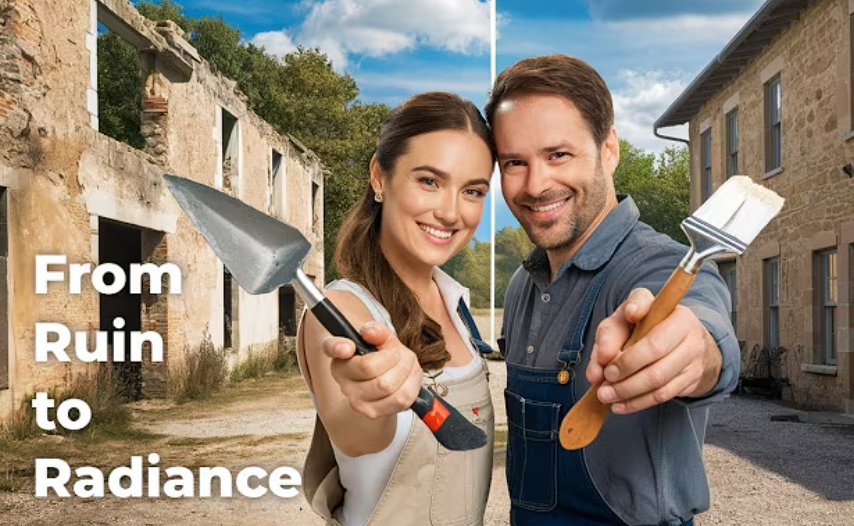
Renovating a farmhouse comes with its unique set of challenges, especially when dealing with the aging infrastructure and the specific architectural elements typical of these historic homes. Here are some of the most challenging areas to repair:
1. Foundations and Structural Integrity
Farmhouses, particularly older ones, often have foundations that have settled over time or may have experienced shifts due to moisture, soil movement, or aging. This can lead to uneven floors, cracked walls, or even leaning structures. Repairing foundations requires specialized knowledge to assess the extent of damage and to ensure the building is stable. In some cases, lifting or re-leveling the entire structure might be necessary, which can be a costly and time-consuming process.
2. Roof and Roof Structure
The roof is another challenging area, as older farmhouses often have steep pitches, multiple sections, and complex dormers or skylights that are difficult to repair or replace. Older roofing materials like slate or cedar shingles may also be harder to source and more expensive to replace. Additionally, problems like leaks or poor insulation can go unnoticed until significant damage occurs. Restoring a roof to its original state while addressing modern needs for insulation and energy efficiency requires a delicate balance between maintaining authenticity and incorporating modern upgrades.
3. Windows and Doors
Windows in historic farmhouses are often made of wood with intricate detailing, which can be difficult and costly to repair compared to replacing them with modern, energy-efficient alternatives. Wooden window frames and sashes may have rotted, warped, or cracked over the years. Restoring these features involves careful craftsmanship to ensure the windows open and close properly while also addressing energy efficiency concerns, often requiring solutions like Spring Bronze weatherstripping. Sourcing or replicating period-appropriate hardware can also be time-consuming and challenging.
4. Electrical and Plumbing Systems
Upgrading the electrical and plumbing systems in a historic farmhouse can be a delicate balancing act. The original systems may be outdated, with insufficient wiring, old-fashioned plumbing, or even unsafe installations that don’t meet current codes. Replacing these systems can require major reworking of walls and ceilings, particularly if the farmhouse has plaster walls, which can be more fragile to handle than drywall. In some cases, the original layout may not easily accommodate modern standards, requiring creative solutions to preserve the home’s aesthetic while ensuring safety and functionality.
5. Flooring and Subflooring
Farmhouses often have original hardwood floors that are beautiful but may be worn, uneven, or damaged over time. Repairing and refinishing old hardwood floors can be an intricate process, especially when trying to match the original finish or restore the natural character of the wood. Additionally, the subflooring in older homes may have experienced damage due to moisture or pests, making it necessary to replace or reinforce sections while maintaining the integrity of the original flooring.
6. Exterior and Siding
The siding of a farmhouse, whether it’s wood clapboard, brick, or stone, can be prone to wear from the elements. Wood siding may have rotted in places, while brick or stone may need repointing to ensure it remains structurally sound. In rural areas, farmhouses may also experience exposure to more extreme weather conditions, leading to accelerated wear. Sourcing materials that match the original siding or replicating old patterns of craftsmanship can make exterior repairs more difficult and time-intensive.
7. Insulation and Drafts
Many historic farmhouses were not originally built with modern insulation standards, leaving them prone to drafts and temperature fluctuations. Insulating old walls, attics, and crawl spaces without disrupting the original design is often one of the most challenging aspects of renovating a farmhouse. Solutions like spray foam insulation or blown-in cellulose can help improve energy efficiency, but care must be taken not to damage the home’s structural elements, such as timber framing or original finishes.
8. Basements and Crawl Spaces
Older farmhouses often have basements or crawl spaces that were not constructed with modern water management in mind. Issues like poor drainage, moisture buildup, or even pest infestations can create significant challenges when repairing these areas. Moisture control systems, proper ventilation, and sometimes structural reinforcement are needed to prevent further damage. In addition, these spaces can often be cramped and difficult to work in, adding complexity to any repairs or upgrades.
9. Chimneys and Fireplaces
Chimneys and fireplaces in historic farmhouses, especially those made of brick or stone, can be prone to wear over time due to exposure to the elements, water damage, or the natural degradation of the materials. Repairing or restoring a chimney is a detailed process that may involve rebuilding parts of it, ensuring proper flue function, or addressing cracks and leaks in the masonry. Ensuring that the fireplace functions safely and efficiently while preserving its historical design can be a delicate and challenging task.
10. Interior Walls and Plaster Work
Interior walls in older farmhouses are often made of plaster, which can crack, chip, or deteriorate over time. Repairing plaster is a time-consuming and skillful process that involves patching holes, smoothing out uneven surfaces, and sometimes completely re-plastering sections of the wall. In some cases, it may be more cost-effective to replace plaster with drywall, but this decision can affect the overall character and historical value of the home.
Farmhouse Windows Are Hard To Replace
When renovating a farmhouse, particularly one with historic windows, preserving both the aesthetic and functionality of the original features is key. One of the most effective ways to improve energy efficiency while maintaining the charm of period windows is through the use of Spring Bronze weatherstripping. This material, favored for its durability and traditional appearance, is a perfect solution for refurbishing historic windows. Spring Bronze weatherstripping consists of a thin, flexible metal strip that is attached to the window frame. It creates a tight seal when the window is closed, preventing drafts and improving insulation without compromising the window’s integrity. Its subtle, bronze finish also blends seamlessly with older window styles, enhancing both performance and visual appeal. By incorporating Spring Bronze weatherstripping during your renovation, you can reduce heating and cooling costs while preserving the historic character of your farmhouse for years to come.






